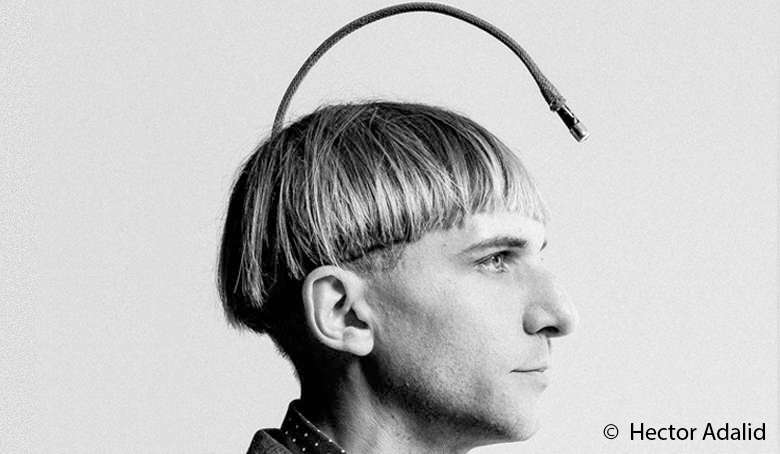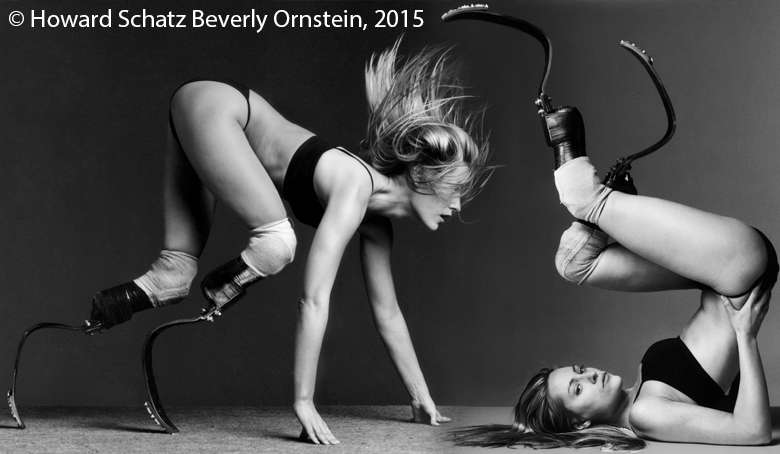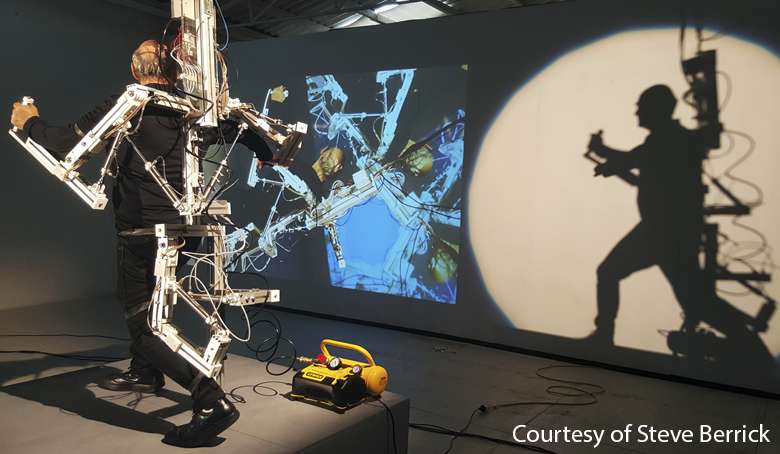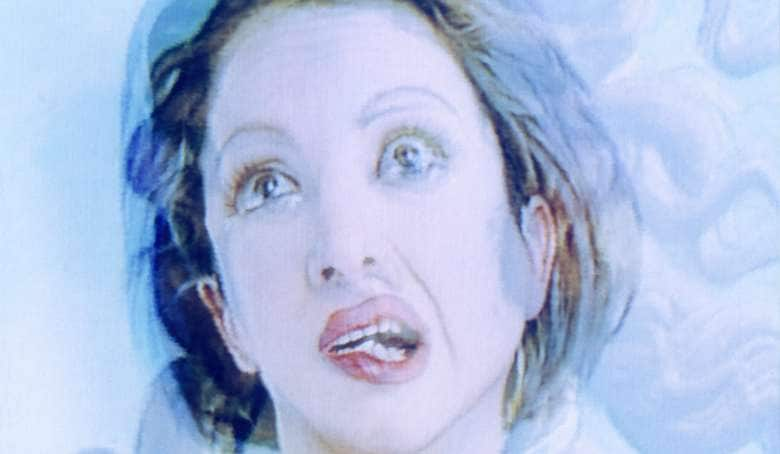The first section of the exhibition presents physical and biological ways in which we have augmented our minds and bodies. From prosthetics that augment bodily functions to medical interventions that change how we think, this part of the show explores what it means to be a cyborg today.
Featuring: Aimee Mullins, House of Natural Fiber, SPRINT and WAAG Society, Sophie de Oliveira Barata, Addie Wagenknecht, Corinne Mariaud, ORLAN, Marc Owens, Lorenz Potthast, Chris Woebken and Kenichi Okada, Nina Sellars, Stelarc, Neil Harbisson, Moon Ribas and works from the Museum of Applied Arts and Sciences (Sydney).

Sonochromatic Head and Seismic Arm, 2015
Cyborg Arts, Neil Harbisson and Moon Ribas
The Cyborg Foundation was co-founded by Neil Harbisson and Moon Ribas. Harbisson is best known for having an antenna implanted in his skull. He is officially recognised as a cyborg by the British government. His antenna allows him to perceive colours as sound waves. His collaborator, Moon Ribas, is a contemporary choreographer who experiments with different cybernetic devices that allow her to perceive movement in a deeper way. These artists no longer use technology as a tool for creation: it constitutes part of their body as an extension of their capacities for sensation and perception. The two life-size cybernetic sculptures contain sensors that allow the sculpture to connect to certain data in real time and to the body and mind of the artists.


Aimee Mullins Cheetah Legs, 2001
Howard Schatz
Aimee Mullins first received worldwide media attention as an athlete. Born without fibulae in both legs, at 2 years old, she had learned to walk on prosthetic legs, and spent her childhood doing the usual athletic activities of her peers. She competed in the 1996 Paralympic Games in Atlanta with woven carbon-fiber prostheses that were modeled after the hind legs of a cheetah, sparking a media debate about the radical design of her prototype sprinting legs. Mullins later made her runway debut as a model in London at the invitation of fashion designer Alexander McQueen and has been influential in changing perceptions of people with varying abilities.

StickMan, 2017
Stelarc
Performance at Daedalus, Fringe World, Chrissie Parrot Arts, Perth
Sound by Petros Vouris
Assisted by Tim Jewell, Steve Berrick, Alwyn Nixon-Llyod, Steven Aaron Hugues, Rodney Parsons, Paul Caporn
One of Stelarc’s most recent performances was StickMan performed in Perth in 2017. Stelarc was strapped to a custom-engineered robotic exoskeleton that choreographed his movement. StickMan was a gesture generating system capable of 64 possible combinations. An Inertia Spacialiser Unit was strung down StickMan's spine like a monochord to generate fluctuating waves of sound as the StickMan vibrated with movement. Accelerometers and gyroscopes were attached to each moving limb on Stelarc’s body tracking and moving the sounds generated across a multichannel speaker system. The sounds themselves were an extension of StickMan’s body.


Self-Hybridation, Entre-deux (Self-Hybridation, In-Between 1994)
ORLAN
ORLAN is an internationally acclaimed artist from France, who makes her own body the medium, the raw material, and the visual support of her work.
Since 1994, ORLAN has worked on a digital photographic series entitled, Self-Hybridization where her image merges with masterpieces of art history. In this example, ORLAN overlays her own image with Botticelli’s famous artwork, The Birth of Venus, in an attempt to draw attention to the relativism and subjectivity of our aesthetic canon. The artist melds and hybridises her own image with that of Venus, the goddess of beauty, juxtaposing conventional beauty with less conventional; the classic and the modern; the mythological and the tangible. ORLAN’s artwork is an interrogation of the status of the body, the aesthetic canons imposed on women through time and culture, and their related pressures.
